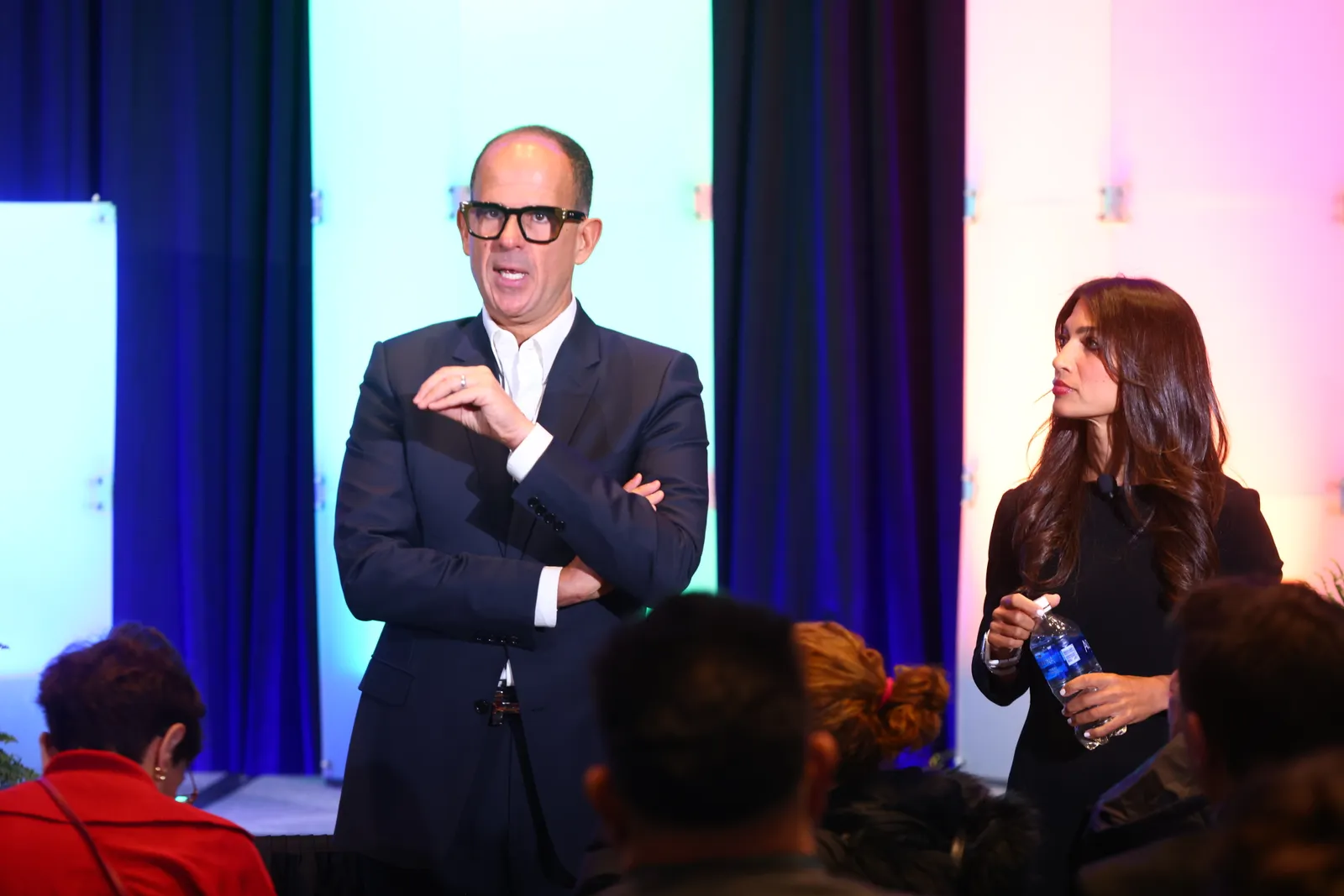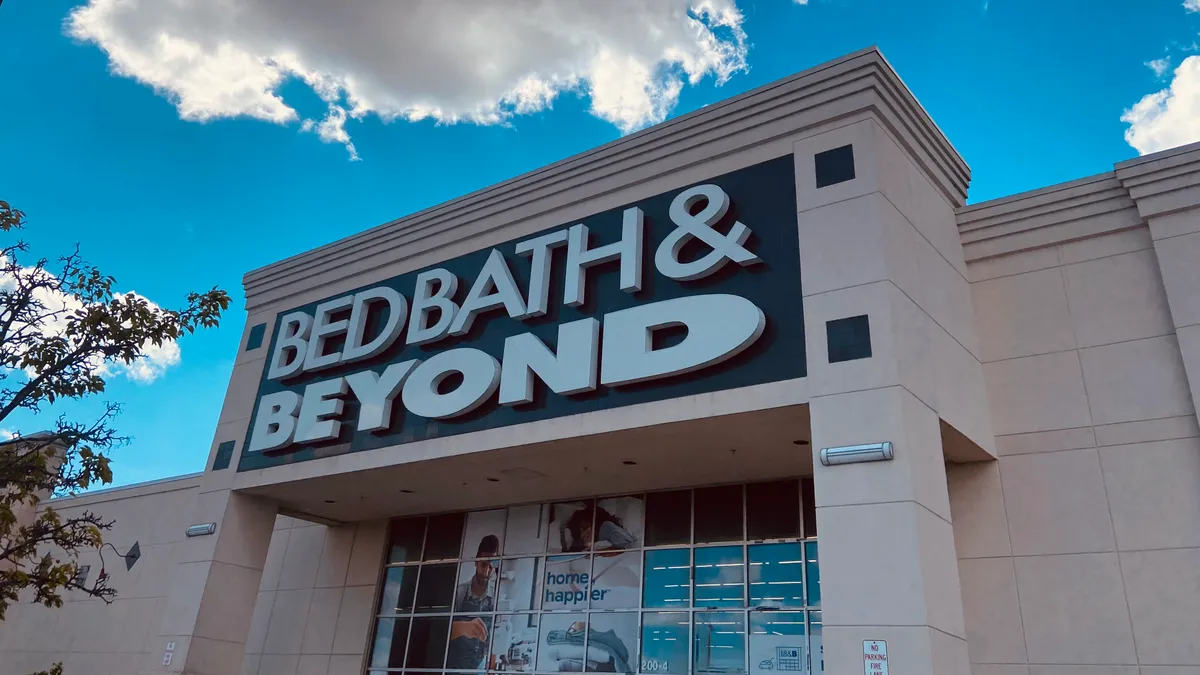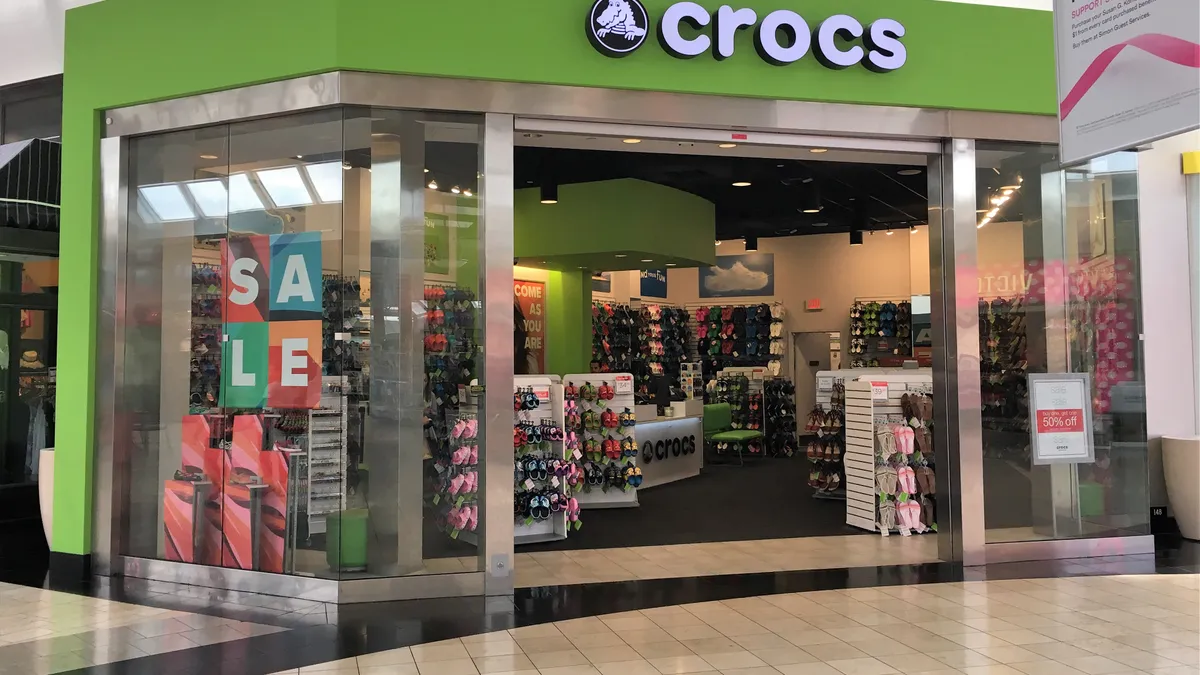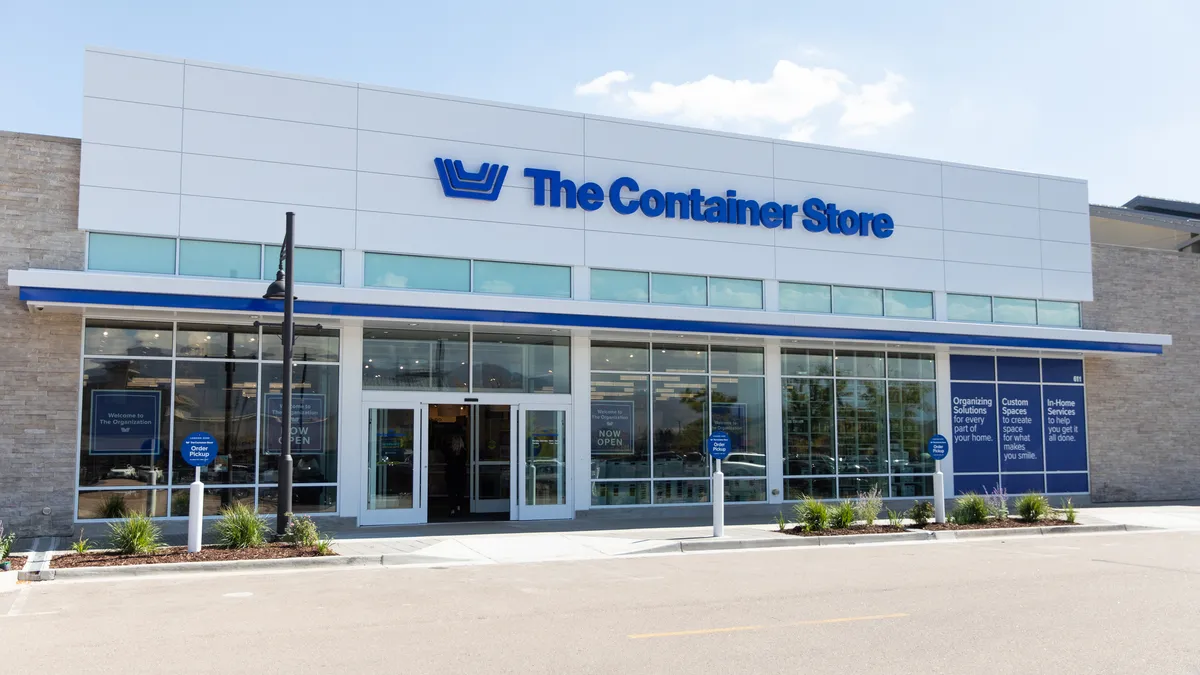Just over a year ago, it appeared Bed Bath & Beyond was done.
After years of floundering, failed attempts to raise cash and mass layoffs, the retailer filed for Chapter 11 bankruptcy after over five decades in business in April 2023. At the time, Bed Bath & Beyond had $1.8 billion in debt and 360 stores in the U.S.
In the long lead-up to that move, some of the company’s decisions, like pursuing a private label strategy that made popular name brands hard to find in stores, alienated consumers. The retailer also experienced pandemic-related supply chain challenges.
After 52 years in business — and two months after seeking Chapter 11 protection and announcing plans to shut down, online retailer Overstock.com last June won a bankruptcy auction with a $21.5 million stalking horse bid to buy elements of Bed Bath & Beyond’s intellectual property.
Later that month, Overstock said it planned to rebrand itself to Bed Bath & Beyond. Despite the bankruptcy, “the brand remains strong with consumers,” Overstock’s then-CEO Jonathan Johnson said. Under Johnson’s leadership, the company made several big moves. It relaunched Bed Bath & Beyond’s e-commerce site and changed its corporate name to “Beyond”.
Around the same time, the company decided to discontinue — but then later relaunched — the Overstock brand. However, after several quarters of lackluster performance as a combined company, activist investors called for Johnson’s ouster. He left the company in November.
In his place, those investors, led by John Thaler, founder of investment firm JAT Capital, advocated for and ultimately succeeded in getting businessperson and former TV personality Marcus Lemonis appointed executive chairman of Beyond’s board of directors. Lemonis acknowledged his leadership ascension was unusual.
“So in December of 2023 … I kicked down the door,” Lemonis said in March during a keynote speech at The Inspired Home Show in Chicago. “And for those of you that are in the industry, my arrival to the company was less than conventional. I came through an activist investor and pushed all the idiots out of the room. And I have no problem saying that.”
Lemonis said during a February earnings call that shutting Overstock down “was a fatal mistake.” In addition, Lemonis said past leadership made an error by allowing or pushing Overstock to morph from an off-price retailer to an entity without a distinctive, strong brand identity. Instead, “what they did is they took the [Overstock] website and they literally painted it blue and changed the logo. … And when the company did that, the Overstock customer arrived at the party that they normally went to every single day and they knocked on the door and the people that answered the door were different and they didn’t tell anybody why,” Lemonis said in his Chicago speech.
“I came through an activist investor and pushed all the idiots out of the room. And I have no problem saying that.”

Marcus Lemonis
Beyond Inc. executive chairman
Today, about a year after declaring bankruptcy, Bed Bath & Beyond is back, but as an online only store. Overstock is back too. And late last month, Beyond said it plans to relaunch online retailer Zulily in early to mid-September. At the same time, the company reported a net loss of $73 million for the second quarter. Net revenue fell 5.7% from $422 million a year ago to $398 million for the quarter ended June 30.
Developing ‘a gallery of brands’
The value in Bed Bath & Beyond and Overstock likely lies in the high brand awareness the two retail banners hold with U.S. shoppers, David Mayer, senior partner for marketing and customer strategy at Lippincott, a brand consultancy, told Retail Dive.
“They also have sizable active annual customer bases, plus large customer lists,” Mayer said in emailed comments. “Bed Bath & Beyond also performs strongly in SEO, being ranked in the top three for over 22,000 unbranded search terms, e.g. second-ranked in Google for the term ‘bed’ and third for ‘dining room sets.’”
Mayer said that means the two brands can potentially reach a large audience searching for relevant products. “Replicating this from scratch would be far more expensive than the investment to acquire the two brands,” Mayer said.
Lemonis, during his Chicago event remarks, said he wants to use Bed Bath & Beyond and Overstock as the foundational elements of a gallery of brands.
Beyond has continued to tweak its brand portfolio. It acquired defunct e-commerce retailer Zulily for $4.5 million in March. That same month, it announced plans to sell Wamsutta, a bed linen brand, to Indo Count Global for $10.2 million. The company acquired Wamsutta intellectual property in June 2023 as part its purchase of the Bed Bath & Beyond brand and associated intellectual property, according to an SEC filing.
“With the sale of the Wamsutta IP, the company has successfully recovered approximately 48% of its $21.5 million purchase,” Beyond said in a regulatory filing with the U.S. Securities and Exchange Commission.
Lemonis said in March he envisions Beyond’s brand portfolio that would eventually capture “every homeowner or renter in America” regardless of their demographic, gender or income. Over time, he said, the company wants to build its gallery of brands ranging from luxury to off-price flash sales that would allow Beyond to connect with everyone. “And over time, if you give the customer and the vendor a great experience, you’re going to build trust. And if you build trust, then the portfolio companies do fine,” Lemonis said.
As of early August, Beyond’s brand portfolio included Bed Bath & Beyond, Overstock, Baby & Beyond, Backyard.com and College Living. Zulily, Kids & Beyond and Studio4 Beyond were listed as brands that are coming soon on the company’s website.
“Home furnishing and accessories is a category where there are thousands if not millions of products that reflect the unique tastes that we each have,” Mayer said. “That means people are willing to spend hours browsing to discover the product that’s right for them; it also makes price comparisons across retailers challenging.”
Mayer described Bed Bath & Beyond as “a storied brand” with high search rankings. Mayer said the company’s key challenges going forward will be increasing engagement, maximizing opportunities for shoppers to find unique products, facilitating great shipping experiences and finding opportunities to increase basket sizes.
“Content strategy — meaning what ensures Google continues to rank Bed Bath & Beyond highly — will be where the brand needs to win,” Mayer said. In contrast, Overstock is in a weaker position, Mayer said, and will need to focus on a target audience or purchase occasions while seeking to build organic ranking performance.
Beyond plans to use Salesforce Data Cloud to unify customer data. “Our work with Salesforce signifies a new era for Beyond, with digital at the forefront of our growth initiatives,” Carlisha Robinson, Beyond’s chief customer officer, said in a May 1 announcement.
“Through our expanded collaboration, we will harness the capabilities of the Einstein 1 Platform, including Data Cloud, to tap the power of AI and data to reach our customers in a more personalized way and drive loyalty providing the same unique and tailored experience shopping online as they get when they walk into a retail store,” Robinson said.

Under new management
Soon after Lemonis took charge, Beyond selected new leadership to steward Bed Bath & Beyond and Overstock. Chandra Holt who is new to the company, was named Bed Bath’s CEO. Holt has held leadership roles at Walmart, Target and Conn’s HomePlus. Dave Nielsen, who first joined Overstock a decade ago, was named CEO of that banner.
However, Holt left the company in June after less than five months in the role as part of a C-suite reset. At the same time, Nielsen, who was CEO of the Overstock banner, was named president and oversees marketing, merchandising and supply chain.
“The leadership team will need to redefine each brand’s DNA, and clearly and strategically communicate the companies’ value proposition to win the hearts and minds of consumers, particularly those who may have walked away given the many changes,” Tricia Logan, managing partner of the global consumer and retail practice at DHR Global told Retail Dive in an email
Logan said the brands must work to rebuild trust and ignite consumers’ passion. “Both Overstock.com and Bed Bath & Beyond inspire a level of sentimentality on a general level; the challenge is figuring out how to tap into that to achieve Beyond.com’s aggressive financial plan over the coming years,” Logan said.
Beyond’s goals include reaching $2 billion in revenue this year. The company also wants to reach 10 million active customers over the next five years. Beyond expects them to spend $250 on an average order value and buy from the company at least twice a year.
During her stint at Beyond, Holt said at the Chicago trade show that Bed Bath & Beyond is trying to own the home retail sector by providing a great value proposition across every customer segment. She described the revamped brand as “a more mainstream tier” offering a high-quality, broad assortment with curated depth. Holt also said part of the company’s strategy included offering specialized experiences to customers.
With so many e-commerce experiences available, Holt said some customers may cross their fingers and hope they get something that meets their needs and expectations. She said that’s not the experience Bed Bath wants to offer customers. That’s why the company is working to offer a wide palette of specialized retail banners. “We know our customers have other needs and those needs, we feel, will be better met with specialized experiences,” Holt said.
The company is positioning Overstock, which officially relaunched in March, as an off-price brand, to meet some of those needs. The new Overstock will offer merchandise at 30% to 70% off MSRP.
“There’s a big segment of customers out there who love this space,” said Holt, who pointed to the success of retailers like TJX and Ross that are “doing an incredible job” based on their financial performance. Zulily, in contrast, will focus on appealing to customers who like flash sales.
In comments shared before Holt’s departure, Logan said Lemonis, Holt and Nielsen comprised a good leadership team, Logan said. All three are known for their customer-first mentality. Additionally, Logan said Nielsen and Holt’s early retail experiences are rooted in merchandising and that perspective will be critical to creating points of differentiation from their competitors, Logan added.
“Dave brings the institutional knowledge of Overstock.com, and his familiarity with the teams and processes will give him the ability to move the needle far more quickly than an external hire, This is a great advantage when rebuilding, as there will be an innate level of confidence from the employees and board,” Logan said.
Conversely, Logan said Holt brought a fresh perspective, which is critical to building the business. For Beyond to achieve its goals, Logan said, the new leadership will need the ability to rally the teams, build collaboration, drive innovative thinking and provide ongoing, transparent communication.
Brick and mortar won’t be back
One part of the Bed Bath & Beyond experience that is unlikely to return anytime soon are bringing back brick-and-mortar stores. “There is no plan for our company to spend our dollars bringing Bed Bath and Beyond back in brick-and-mortar where we sign leases and open locations,” Lemonis said. In the U.S., “that model, financially, just doesn’t work,” he said. Mayer also acknowledged Beyond’s reticence and concerns about resurrecting physical stores are appropriate.
“Physical store networks represent a high fixed cost to maintain and, with the continued rise of internet shopping, are challenging to keep profitable,” Mayer said. However, he added, physical stores do offer benefits. They can serve as venues for hands-on discovery and as marketing vehicles. They also keep the brand top of mind for consumers.
“In the short term, Bed Bath & Beyond is benefiting from the memory of its stores,” Mayer said. “Over time, that benefit will fade and we will see whether organic search is sufficient to keep up customer numbers or whether marketing budgets will need to increase.”
Bed Bath & Beyond: A business timeline
-
1971Lenny Feinstein and Warren Eisenberg invest $50,000 each to start a specialty linen and bath shop with two locations, Bed ‘n Bath, in New Jersey and New York.
-
1985Bed ‘n Bath grows to 11 stores in New York, New Jersey, Connecticut and California. The company opened its first big box-style store that year, a 20,000-square-foot location.
-
1987Bed ‘n Bath changes its name to Bed Bath & Beyond to reflect its expanded offering.
-
June 1992Bed Bath & Beyond goes public and starts trading on the Nasdaq under the ticker BBBY.
-
1999Overstock.com is founded in Salt Lake City, Utah.
-
2001Bed Bath & Beyond sales reach over $2 billion. The company ends the year with 300 stores in 43 states.
-
2002Overstock goes public under the ticker OSTK.
-
2016Overstock’s mobile app surpasses 5 million downloads.
-
2019Under CEO Mark Tritton, Bed Bath & Beyond focuses on creating a private-label brand growth strategy. The strategy fails when customers can’t find the familiar, national, name-brand products they’ve come to expect on the shelf.
-
March 2020Bed Bath & Beyond temporarily closes its U.S. stores due to COVID-related health mandates.
-
2021Bed Bath & Beyond’s net losses reach nearly $560 million.
-
July 2022Moody’s downgrades Bed Bath & Beyond, citing declining revenue, EBITDA and profitability.
-
August 2022Bed Bath & Beyond announces a turnaround plan, which includes laying off about 20% of its corporate and supply chain staff, the closure of over 150 stores and the discontinuation of three of its nine private labels.
-
January 2023Bed Bath & Beyond issues a “going concern” warning that it could file for bankruptcy.
-
April 2023Bed Bath & Beyond files for Chapter 11 bankruptcy protection in federal court in New Jersey. At that time it secured $240 million of debtor-in-possession loans to continue operations.
-
June 2023Overstock.com wins a bankruptcy auction to buy key elements of Bed Bath & Beyond’s intellectual property for $21.5 million.
-
August 2023Bed Bath & Beyond relaunches as an e-commerce-only retailer in the U.S.
-
November 2023Former CEO Jonathan Johnson, who led Overstock’s acquisition of Bed Bath & Beyond, leaves the newly combined company. Around the same time, the consolidated entity of Bed Bath & Beyond and Overstock changes its name to Beyond.
-
March 2024Beyond relaunches Overstock.com. The new e-tail site debuted by offering up to 60% off a selection that includes furniture, rugs, houseware, garden items and jewelry.
-
May 2024The company reports a $72 million Q1 net loss, up from $10 million a year ago, and an operating loss of $58 million from $8 million. Beyond’s net revenue was nearly flat for the quarter at $382 million.
-
May 2024Beyond Inc. announces the addition of eight people to its leadership team. Four will fill C-suite positions, while the rest will serve in senior vice president, vice president or director roles at Bed Bath & Beyond, Overstock and Zulily.
-
June 2024Beyond updates its C-suite by eliminating the Bed Bath & Beyond and Overstock co-CEO roles and expanding its executive chair role. As part of the leadership changes, Chandra Holt, who joined Beyond in February as CEO of the Bed Bath & Beyond banner, left the company. Dave Nielsen, who was CEO of the Overstock banner, is now president and will oversee marketing, merchandising and supply chain.
-
July 2024Beyond announces plans to relaunch Zulily in early to mid-September.























